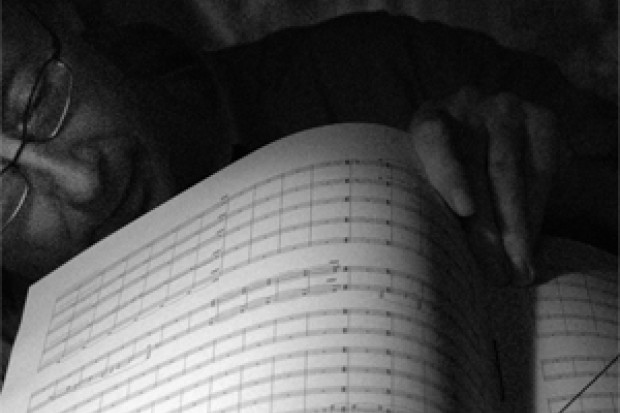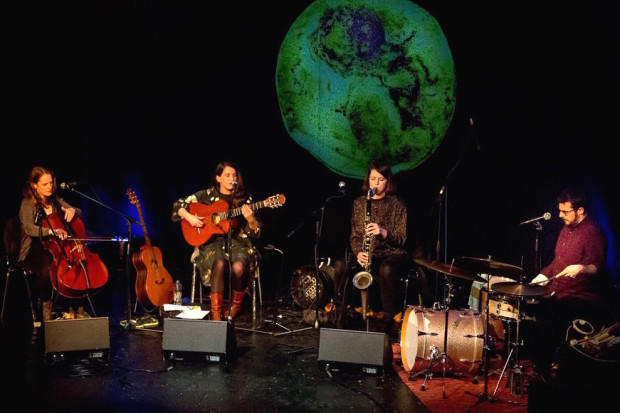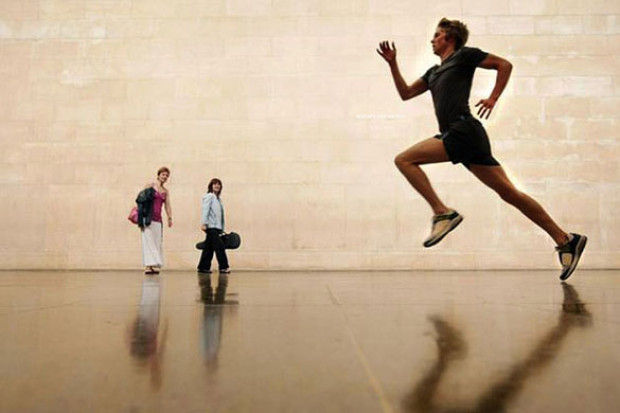Niche within a Niche within a Niche...
When we blandly use the word ‘music’, for example when discussing our likes and dislikes, we assume that the person we are talking to has the same idea of the word as ourselves. But those of us who work in music often find ourselves quickly tripping up on a lack of shared understanding. For instance, just today I was saying to someone that I am a composer. They then said: ‘Is that the pop kind or more the Lloyd Webber kind?’ I knew then that I would not be able to chart a true position on this particular map.
Preconceptions like this are something we routinely underestimate. The nature of how the mind works, concerning any sort of umbrella term (and music is one), is often quite functional, so that once a mind has a working model of a concept it goes along unchallenged for as long as possible. A change of mind – the evolution of our understanding – only happens after a few repeated challenges to the status quo. And as my experience illustrates, any two individuals’ concept of such a word at any given time usually differs, often very widely.
I would suggest that in music we badly need a concept akin to ‘idiolect’. Linguists use this term to underline that each individual’s use of and understanding of a language is peculiar to that person. It’s like saying that each person carries around a mini-dialect for one, the set of all the words they know, all the words they think they understand but constantly misuse, and all their favourite phrases and clichés. One could add to that their depth of understanding of the roots of words, their archaic meanings, and their knowledge of other languages that they would have picked up in the course of their reading or education.
So it goes with music: not only does each one of us have a ‘musical idiolect’ – which we might define as a sum of the tunes and pieces we have heard, liked, disliked, misheard and so on – but this is enriched or complicated by the ‘how’ of its acquisition. In other words there is a phenomenal number of cultural conditions surrounding our ‘musical idiolect’. Also, most musical preferences – for those who do not go on to study music – are formed while still adolescent, and frequently get fairly stuck after early adulthood. So, many of the choices are made under the general social (and nowadays commercial) pressures of adolescence – or else in negative reaction to those pressures.
The concept of idiolect is expandable outwards to any identifiable social group. Then it becomes dialect. Every native-born Irish English-speaker knows a raft of phrases. And anyone tuned into Dublin slang has another mini-dialect at their disposal. They can quickly lose English speakers from other parts of the world when in this mode. They can also be fairly fluent in many dialects at once, yet might get lost in other dialects within their own language; and at the same time they might know quite well a couple of entirely different languages.
That’s a complicated but realistic picture of the individual mind’s relationship with language. So it is with music, with one difference: those language dialects evolved and exist according to geographical areas. The many, many identifiable musical dialects are acquired not according to geography, but according to elusive criteria that haven’t been investigated yet.
We know that all the world’s ‘Cure-heads’ are perfectly attuned, dress alike and share some similar feelings about society, though they may live in Hamburg, Leicester, or Leitrim. Thanks to modern marketing, various music stars have similar followings dotted about on the globe, usually with an identifiable fan type. But just as with language, it is possible, normal even, to be tuned in to various musical dialects at once. So an imagined individual might like some Baroque music, some jazz and some classic rock, while just not ‘getting’ disco, Mozart, and folk music.
As with language, there are people whose musical idiolect spread is wide, and who may also operate in different musical languages. Then there are people whose spread is very narrow (they might say they like middle-of-the-road music, and describe themselves as hating jazz, dance music, and basically everything else). So musical idiolect is the individual’s unique understanding of what is covered by the word ‘music’.
Some would argue that any problem associated with the rigidity of a person’s idiolect is only a question of exposure. But how much exposure? Perhaps more than we typically assume. You could say about language, too, that exposure will open the door to understanding, but with language we don’t use the term so glibly. Of course the cases for music and language differ; but essentially what I am getting at is that in any individual mind there are types of music that are embraced fully, other embraced only partially, and others felt to be ‘foreign’ to that person, and therefore unembraceable. A comparison with language that uses the words ‘idiolect’ and ‘dialect’ is useful.
The symphony hall of the 21st century…
The breadth of and potential distance between individual people’s separate idiolectical grasp of the word ‘music’ can go far beyond definitions that depend on categories of musical style. It is useful to step further back and consider how people use music. I am no sociologist, but let us imagine one drawing up a rough list of the social uses for music, embracing all known societies. It might look something like this: music therapy; music for relaxation – ‘chill’ to Rachmaninov, mood change; music for dancing, courting; ritual music; making music together – amateur choirs, musical societies; music for meditation; music to induce a state of receptivity – advertising; music to affect a basic physical function – fast-food music, supermarket music; music as shibboleth; music as art.
I may, as a musician, assume that there are only two states of mind when music is going on: listening ‘properly’ or ‘screening it out’; but this list suggests that that is actually a narrow view. Musicologists, likewise, habitually work to just one of the above bullet points, and disrespect the others.
Taking just the second heading above – ‘music for relaxation’ (and it would be unpopular with the average musician) – I found an illuminating article on the topic in New Scientist: John Sloboda, professor of psychology at Keele University, reported on a scientific study of how people access music and why. He wrote:
…one of the things that surprised us, but perhaps shouldn’t have, is that the most common place for people to listen to music is in transit. The car is the symphony hall of the 21st century. People keep their favourite collections in their cars. And when you ask about this, they say it’s about getting them in the mood for the next thing they are going to do. Driving home from work you play soothing music to forget the stresses of work and get into a more mellow mood. It’s as if people are using music as a self-administered emotional therapy or emotional amplifier to modulate, or moderate, their mood. There’s nothing else that does this like music does.
So, taking this psychologist’s view, the chief function of music in this society is ‘chilling out’.
Now a creative musician may like to ignore that sort of ‘use’ of music and regard it even as an abuse, but their discomfort is not going to register at all in this psychological model. It merely exemplifies the huge distance between two different idiolectical understandings of the word music.
If we take this psychologist’s point properly on board we can take it as a valid viewpoint that just happens to be far from the day-to-day work of the musician. Then if I, as a practising creative musician, zoom in, as it were, from that vantage point to my own experience, it illuminates afresh the well-worn point about contemporary composition existing in a niche – from Mr Sloboda’s point of view it actually exists in a niche within a niche within a niche within a niche! Firstly, most people get music through mechanically reproduced means, so the people who go to live music at all are niche 1. The people who really regard any of it as ‘art’, i.e. not for entertainment/relaxation, are niche 2. Those who like ‘classical music’ are niche 3, and those who like contemporary art music are niche 4. In addition, anyone who performs or writes it is inside a fifth niche. Is it any wonder that composers so easily get out of touch? But this does not just apply to contemporary art music. Any music where it is possible for stylistic development to get intertwined with the personal contribution of an individual artist is in the same boat. So it applies to traditional music or jazz (or other types of music) just as well.
Which public?
What, in the light of all this, of the innovative musician’s relation to the ‘general public’? If someone were to ask me ‘how do you relate to the general public?’ I would have to ask, in all seriousness, ‘which public?’ (Because, as we also saw with ‘music’, everyone has a different idiolectical take on this phrase.) The public who almost never consumes any music? The public who consumes music only as a mode of mood alteration? The public who is looking for a basic level of artistic engagement? And so on and on. If I am to be asked to write ‘for the general public’, which of these do I choose? Let’s even assume we mean those that take ‘music’ to mean an art form where the creative artist expresses something of him/herself, in parallel to the other arts. While this would usefully exclude consumers of relaxation music, it still includes a possible Pink Floyd fan who would curl up at being exposed to Miles Davis or Stravinsky. And how does one reach out then?
Nonetheless, the innovative musician or composer is often exhorted to ‘write/play in a more accessible way, or else expect to have no audience.’ But really, given the fact that everyone has a separate and distinct music idiolect (both in terms of what they are comfortable with and in terms of what they think they are doing when they are listening), it is nigh impossible. The musician would have to try to synthesise a ‘man-in-the-street’ figure to aim at. Not only would this be bound to fail because of the variety out there, but he/she would also have to shut down his/her own music idiolect in the process: it is in fact impossible for a creative musician to create as if he/she had not listened to, and did not know the language of, the music that he/she does. To ask a creating musician to step outside of their idiolect is like asking someone to slip into passable Swahili without any preparation. And to what end? To assume the ears of just one other imaginary individual? In any case, what has to be recognised is that the musician is no better equipped (and quite probably worse) than the next person to come to a useful picture of what might solve the problem of ‘reaching out to the public’.
Creative musicians, however, are simply not involved, at present, in solving such a problem. Many dispute that such a problem even exists. But I would concede that it does exist, and that, albeit passively, innovative musicians play a part in exacerbating it. They face a danger of evolving ever more styles and musical languages that, even if they are artistically sound, have little connection to any audience.
Many composers are not in the slightest bit concerned about this. Having worked out that (a) it is not only their problem (being a societal one, and also shared by promoters and others) and (b) nothing they could do would decisively change things other than to jeopardise their own voice (which is more precious to them), they shun this whole area of discourse.
Additionally, for a composer who wants to make an impact, there is also the temptation to move in the opposite direction away from accessibility, towards being more recherché. This is what usually moves a composing career on in new music circles, where a completely fresh sound is valued above all (regardless of whether it is truly substantial). That brings us to the problem of ‘the new music ghetto’. The contemporary music scene, or any cutting-edge scene (jazz, techno and so on), truly becomes a ghetto at the point where innovation has acquired a value separate from, and seemingly above, quality. The majority of living composers would be against this tendency, but (internationally) it has become the engine for many festivals, and for attracting funding too, so they don’t go on about it. The worship of novelty in this way becomes a shibboleth.
Once the concept of the composer expressing him/herself took hold in music, the historical process (if you accept such a thing) became one of constant discovery of unfamiliar territory. Every creative musician is, by definition, expanding the universe from which any listener can fashion his/her musical idiolect. Meanwhile the size of the mass audience’s average ‘idiolect area’ may be presumed to remain the same, and so innovative music inevitably heads towards smaller and smaller audiences. As this problem stems from a defining condition of art music, we should perhaps re-assess our response to it. But that is all another discussion and another day’s work. For now, whether you can feel the warmth of the remaining flames actually depends on how close you are. Draw in closer (listen closer) if you are feeling the cold.
Published on 1 September 2005
John McLachlan is a composer and member of Aosdána. www.johnmclachlan.org












